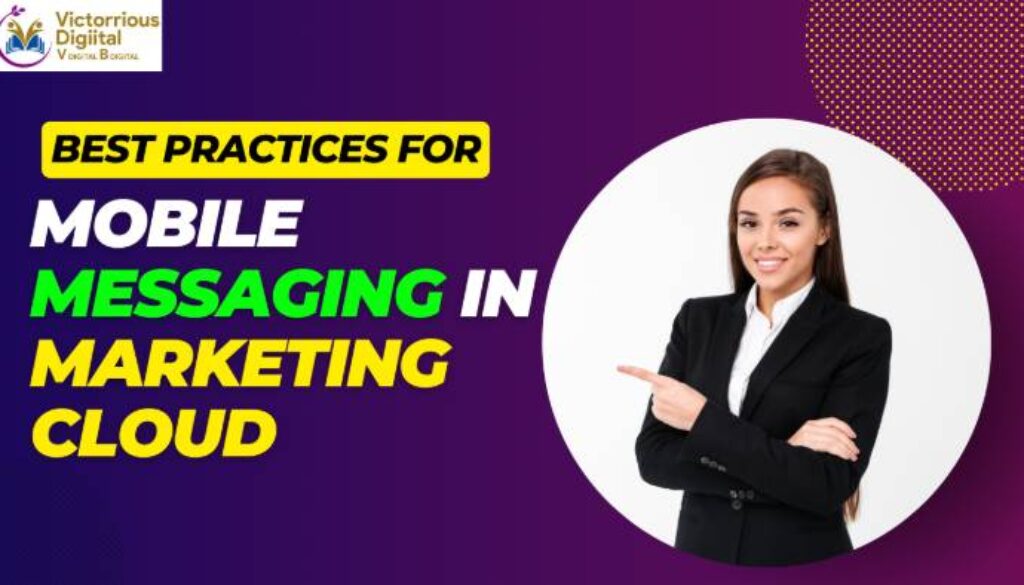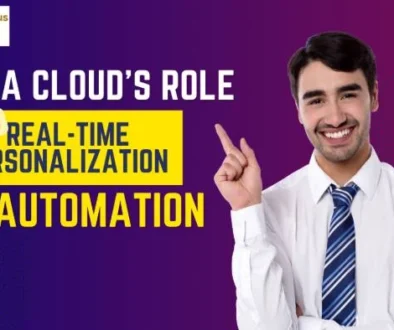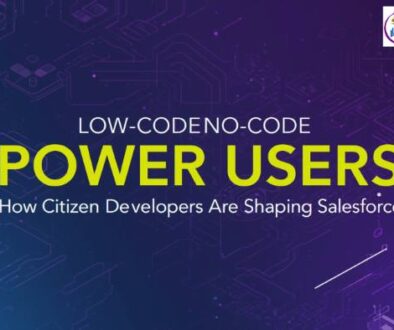Best Practices for Mobile Messaging in Marketing Cloud
In today’s world, everyone uses mobile phones for almost everything—from checking emails and shopping online to learning new skills. For businesses, mobile phones are a powerful way to connect with customers. If you want to communicate effectively, mobile messaging is one of the best tools to use. Salesforce Marketing Cloud offers amazing features to make mobile messaging easy, efficient, and personalized.
In this blog, we will look at the best practices for mobile messaging in Marketing Cloud. These simple tips can help any business improve customer communication and get better results. If you are interested in mastering these skills, you can check out Salesforce Marketing Cloud classes in Pune by joining the best Salesforce Marketing Cloud training programs, or you can explore online Salesforce Marketing Cloud training.
Table of Contents
What is Mobile Messaging in Marketing Cloud?
Mobile messaging in Salesforce Marketing Cloud includes sending:
- SMS (Short Message Service): Regular text messages sent to customers.
- MMS (Multimedia Messaging Service): Messages that include pictures, videos, or audio along with text.
- Push Notifications: Alerts sent to users through mobile apps.
Marketing Cloud lets businesses send these messages directly to customers’ mobile phones. This makes communication quick and personal.
For example, a training institute in Pune like Victorious Digital can use mobile messaging to remind students about class schedules, share learning tips, or send special offers on courses.
Why is Mobile Messaging Important for Businesses?
Here are some reasons why mobile messaging is so important for businesses:
- Fast Communication: Messages are delivered instantly.
- High Open Rates: Most people read text messages within a few minutes.
- Personal Connection: Messages go straight to the customer’s mobile phone, making them feel valued.
- Convenience: Customers don’t need to check emails or log into websites; they get updates directly.
- Cost-Effective: Compared to other marketing methods like print ads, mobile messaging is affordable and reaches more people quickly.
For small and medium businesses, mobile messaging helps build trust and loyalty. Customers feel cared for when they get timely, useful messages.
Imagine you run a Salesforce Marketing Cloud training center in Pune. By sending quick mobile messages, you can easily keep your students informed. You can send reminders for upcoming classes, new batch enrollments, or special offers.
Best Practices for Mobile Messaging
Here are some simple and effective ways to make the most of mobile messaging in Marketing Cloud:
1.Get Permission First: Always get permission from your customers before sending them messages. This is known as “opt-in”. It ensures that people actually want to hear from you. Sending messages without permission can annoy people and damage your reputation.
For example, if someone visits the website of Victorious Digital and signs up for updates about Salesforce Marketing Cloud classes in Pune, you can ask them if they want to receive SMS alerts, like, “Would you like to receive SMS updates about our courses? Yes / No.”
2.Keep Messages Short and Clear: People prefer short and to-the-point messages. Keep your SMS under 160 characters. Make sure your message has a clear purpose and is easy to understand.
For example:
Good Message: “Join our new Salesforce Marketing Cloud batch starting next week! Enroll now and get 10% off. Click here to register: [link]”
Bad Message: “Hello, we are pleased to inform you about our new Marketing Cloud training sessions happening soon. If you are interested, please let us know or visit our website for more details.”
Short messages save time and are more effective.
3.Add a Clear Call-to-Action (CTA): A Call-to-Action (CTA) tells customers what to do next. Examples of CTAs include:
“Register Now”
“Call Us Today”
“Learn More”
Make sure your CTA is simple and direct.
For example: “Learn more about our online Salesforce Marketing Cloud training: [link]”
A strong CTA increases the chance that your customers will take action.
4.Personalize Your Messages: Personalization makes customers feel special. Use their names or mention something specific about them. Marketing Cloud allows you to personalize messages easily.
For Example: “Hi Riya, join our next batch of Salesforce Marketing Cloud classes in Pune and boost your career! Click here to register: [link]”
Personalized messages are more likely to get a response compared to general messages.
5.Send Messages at the Right Time: Timing matters. No one likes getting messages late at night or too early in the morning. The best time to send messages is during regular business hours (9 AM to 6 PM). For special offers or reminders, send messages when people are likely to take action, such as: Lunch Break (12 PM to 1 PM) or After Work (5 PM to 6 PM).
Consider time zones if you have customers in different regions.
6.Don’t Send Too Many Messages: Sending too many messages can annoy your customers. This might cause them to unsubscribe. Stick to sending only important updates or offers. Limit your messages to 1-2 per week unless there is an urgent update. Sending too many messages can harm your relationship with customers.
7.Provide an Easy Way to Opt-Out: Always give your customers the option to stop receiving messages. This builds trust and keeps your audience happy.
For Example: “To stop receiving messages, reply STOP.”
Marketing Cloud can handle opt-outs automatically, making it easy for you to manage.
8.Use Multimedia (MMS) When Needed: Sometimes, adding an image or video can make your message more engaging. If you have a special announcement or event, consider using MMS. Make sure the image or video is relevant and adds value to your message.
For Example: Send an image of a certificate to students who complete their training.
9.Test Your Messages: Before sending messages to your customers, test them with a small group. This helps you identify any mistakes or areas for improvement.
Check if the message looks good on different phones (Android, iPhone) and if the links work properly.
10.Measure Your Results: Marketing Cloud provides tools to track how your messages are performing. Check important metrics like:
- Delivery Rate: How many messages were delivered successfully.
- Open Rate: How many people opened your message.
- Click Rate: How many people clicked on your link.
If fewer people are clicking your links, try changing the CTA or offer.
Also Read – Using Journey Builder to Nurture Leads Efficiently
Conclusion
Mobile messaging in Salesforce Marketing Cloud is a powerful way to reach customers directly and build strong relationships. By following these best practices—getting permission, personalizing messages, sending them at the right time, and including clear CTAs—you can improve your communication and achieve better results.
If you want to become an expert in mobile messaging and other Marketing Cloud tools, consider joining Salesforce Marketing Cloud classes in Pune by enrolling in the best Salesforce Marketing Cloud training programs or signing up for online Salesforce Marketing Cloud training.
These courses can give you the skills you need to succeed in today’s digital marketing world!




